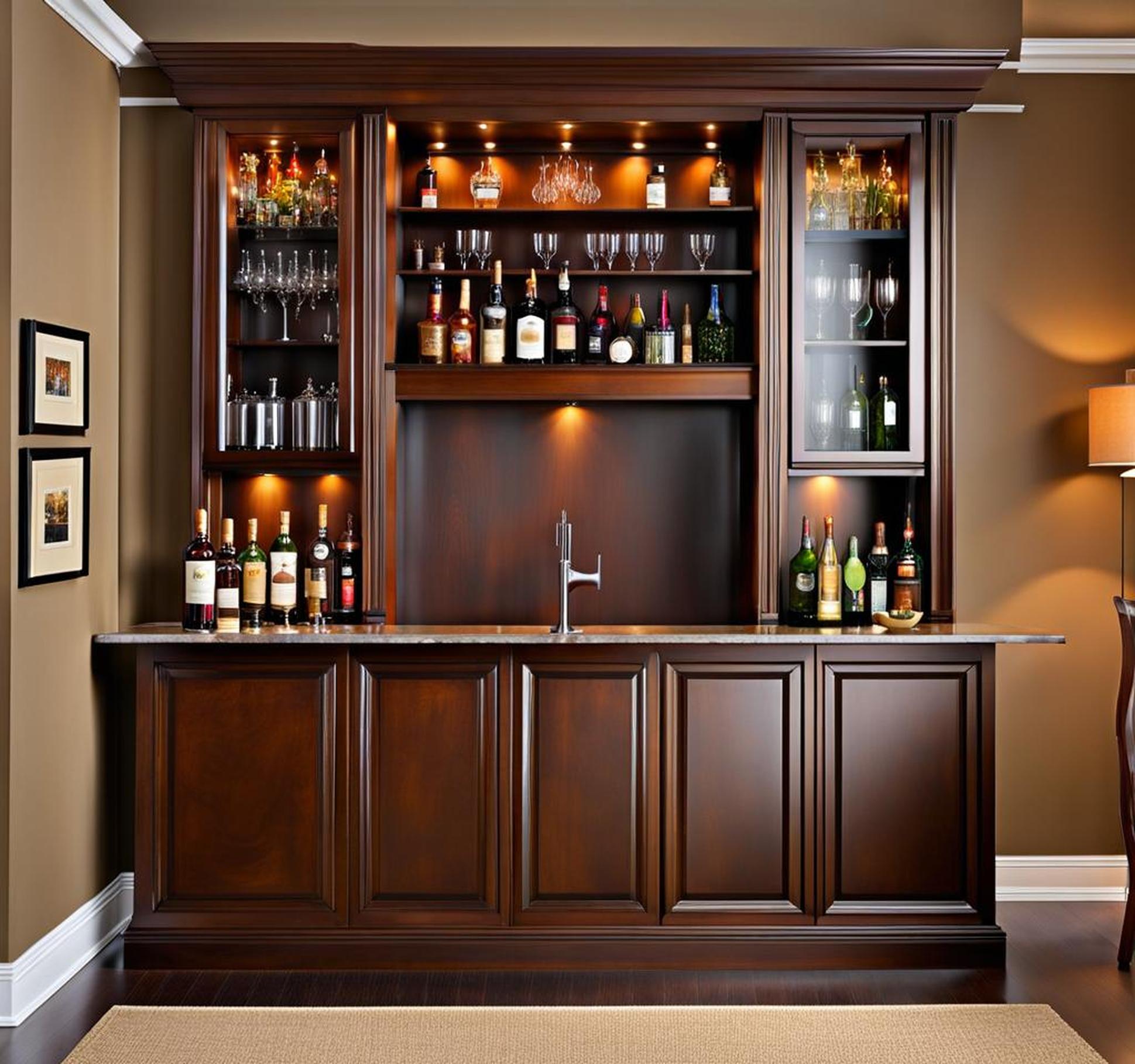Having a small living room doesn’t mean you have to miss out on the style and convenience of having a home bar. With some clever planning and space-saving solutions, you can incorporate a compact yet functional bar that packs a big punch. The key is finding the right bar size and layout to maximize your tiny square footage. Read on for tips to help you get started.
A thoughtfully designed small bar opens up entertaining possibilities even in tight living rooms. You’ll have a chic spot to mix and serve drinks to guests. And it provides extra storage for barware and spirits that can declutter the rest of your space. With innovative bar seating, lighting, and decor, your petite bar can feel like the cozy heart of your home.
Determining Your Bar Placement
Since space is at a premium, placement is key when adding a bar to a small living room. Look for underutilized nooks and corners that can accommodate a narrow bar. Measure the room to find spots with enough square footage for the bar itself plus space to walk and pull out stools. Keep traffic patterns in mind.
Assessing Your Floor Plan Options
Along an empty wall – Look for a narrow, unused wall space like next to an entryway or near the kitchen. This can accommodate a long, shallow bar.
Tucked into a corner – Create a triangular bar that utilizes two converging walls. This takes advantage of wasted space.
Turn an awkward nook into a bar space – Odd alcoves or bumped out areas are perfect for building a custom bar.
Bar Cart vs. Built-In Bar
A portable bar cart stashes easily when not in use. But for regular use, a built-in bar makes better use of limited area. Install directly into the walls with plumbing and electrical already in place. Built-ins also have greater storage capacity. If you ever relocate, simply turn it into a desk or media center.

Selecting the Right Bar Size
To determine the optimal bar size, first look at your overall living room dimensions. Follow general furniture spacing guidelines, allowing for comfortable walkways and seating areas. Here are some bar size considerations for small living rooms:
Measure Your Room Dimensions
– Allow at least 36 inches for main walkways.
– Leave 30-48 inches around seating areas and in front of other furniture.
– Measure possible bar locations across the wall space from end to end.
Bar Size and Shape Considerations
– A narrow rectangular bar is ideal for tight spaces. Allow at least 16-18 inches of overhang.
– A curved or circular bar can utilize corners. Just leave enough room to walk behind it.
– Limit depth to around 48 inches at most so stools don’t bump other furnishings.
Optimal Bar Height and Overhang
– Standard kitchen counter height (36 inches) allows use of existing stools.
– Bar height (42 inches) fits tucking stools underneath.
– Allow at least 16 inches of overhang for drinks and elbows. But don’t exceed 20 inches deep.
Incorporating Clever Bar Storage
One major perk of adding a bar is gaining storage space. Maximize every inch with customized storage solutions:
– Install floor-to-ceiling shelving against the back wall to stash glassware up high.
– Add upper cabinets with interior liquor storage and lower cabinets for accessories.
– Include fridge and wine cooler drawers underneath the bar counter.
– Use drawer inserts and shelf dividers to neatly organize tools.
– Hide appliances inside cabinets with special roll-out shelves for mixers.
Stylish Seating Solutions
The key to seating at a small living room bar is flexibility. Look for compact stools that tuck neatly under the bar when not in use. Here are some space-saving options:
– Stools with a streamlined silhouette that slide beneath the bar overhang.
– Nesting stools in varying heights to accommodate more guests.
– Folding or stacking stools to stash away.
– Slim ottomans and benches that serve multiple purposes.
– Small accent chairs on casters to easily roll out of the way.
Lighting and Decor Touches
Proper lighting instantly makes a petite bar feel welcoming. Accent the space with mirrors and accessories to give it personality:
– Hang pendant lights directly over the bar surface for task lighting.
– Install dimmable sconces to create a moody bar ambiance.
– Use mirrors strategically to visually expand the tight quarters.
– Display barware collections and rotating seasonal accessories.
– Add warm metals, rich wood tones, and sleek glass for an elegant look.
Stocking Your Compact Bar
Curating a compact bar is all about editing down to the essentials. Follow these tips for stocking:
– Store staple liquor bottles that you use most often.
– Invest in smaller 200 ml and 375 ml bottles.
– Keep just one or two of each spirit type and a well-edited mixer selection.
– Use mini bar tools like shot pourers, pint glasses, and a handheld mixer.
– Stash extras like backup bottles and glassware away in a nearby closet or cabinet.
– Display garnishes creatively on a wall-mounted rail or in glass canisters.
– Use an ice bucket instead of taking up space with an ice maker.
Just because your living room is pint-sized doesn’t mean you have to miss out on having a super stylish home bar. Consider the layout and existing footprint to find a spot for a compact bar. Customize the size, shape, storage, and decor to make the most of limited square footage. With clever solutions, even the smallest living rooms can become the ultimate place to relax and entertain.
